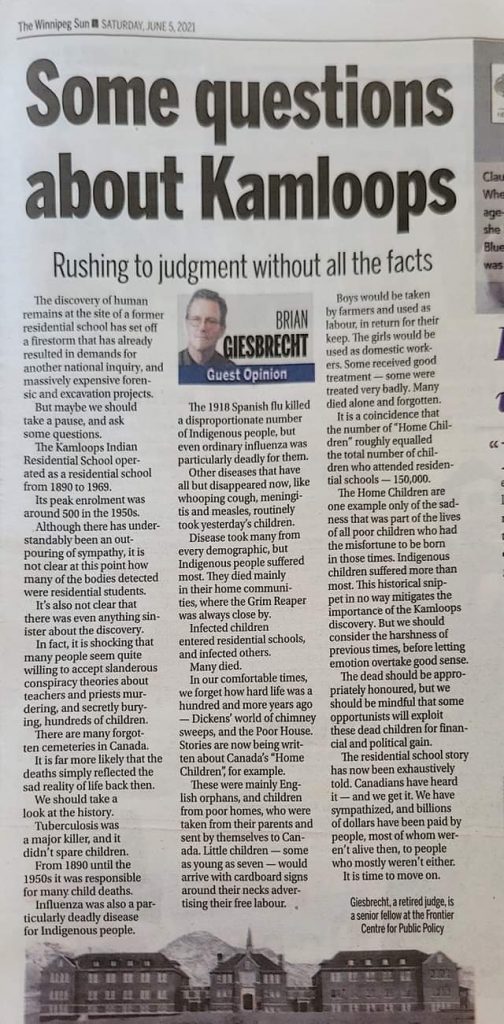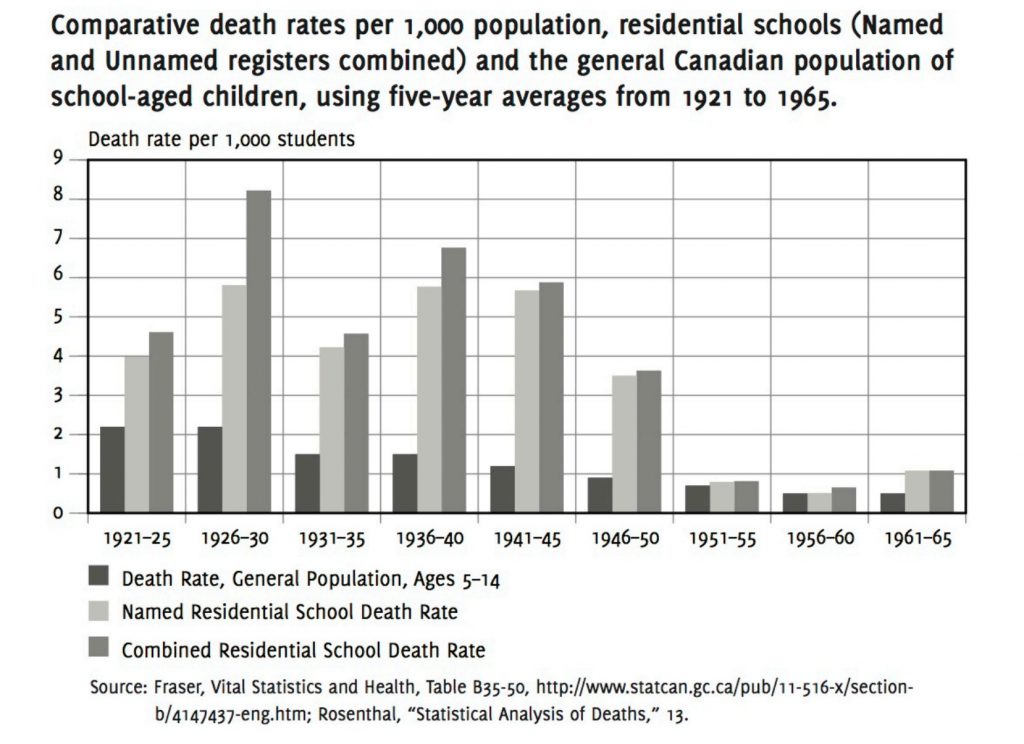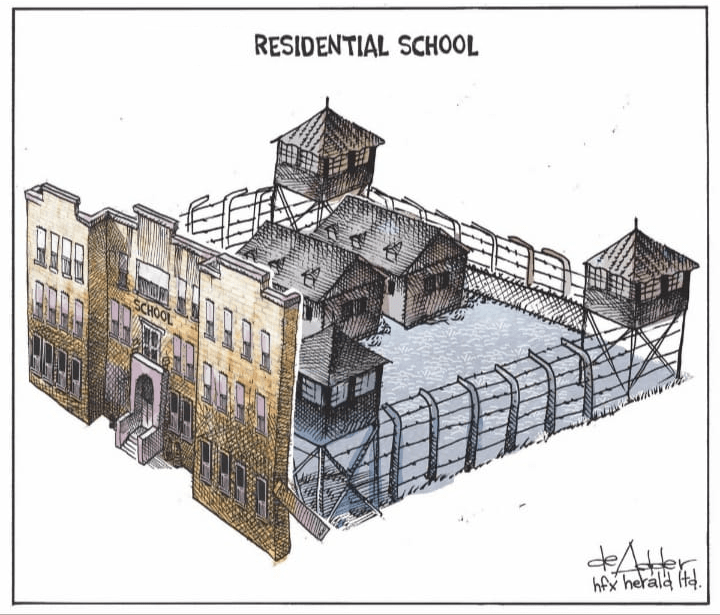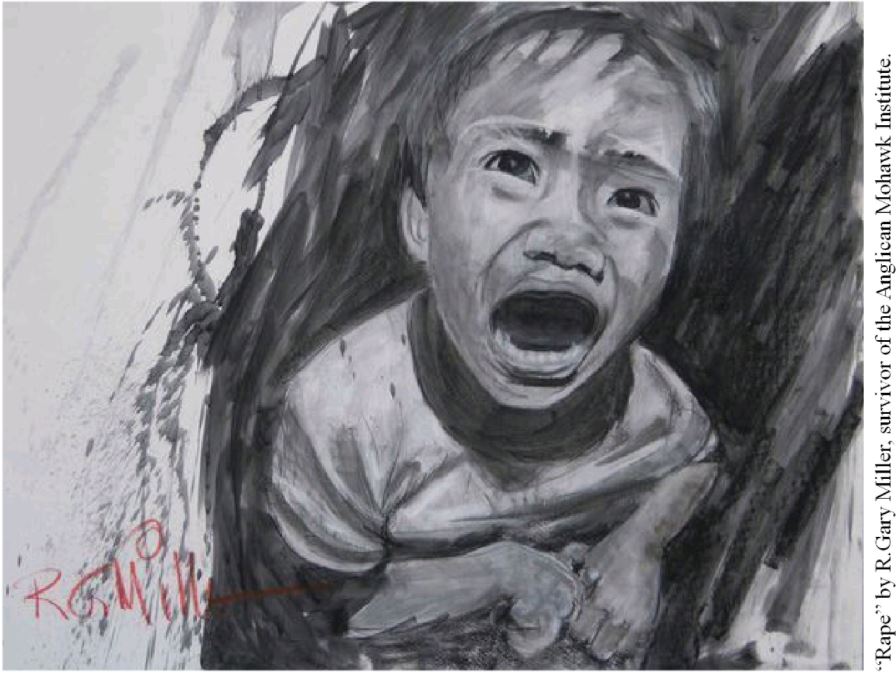June 11, 2021
Mr. Mark Hamm, Editor-in-Chief
Winnipeg Sun
1700 Church Avenue
Winnipeg, MB R2X 3A2
Re: Winnipeg Sun contributes to the denial of the atrocities experienced by Indigenous children who were forced to attend Canada’s residential schools
Dear Mr. Hamm,
As the Grand Chief of the Manitoba Keewatinowi Okimakanak (MKO) Inc., a non-profit organization representing 26 Northern First Nations, I am writing to advise you that MKO is no longer willing to work with the Winnipeg Sun.
I have instructed my staff to remove all Winnipeg Sun staff from our media list. We will not grant any interviews to your publication unless you are willing to publicly retract and issue an apology for the opinion piece you published in your paper on June 4, 2021.
The article by Brian Giesbrecht was titled, “Some questions about Kamloops,” in which he says “it is time to move on” in relation to our collective mourning of the 215 children found in unmarked graves at the Kamloops Residential School.
Your writer also suggests that the children in unmarked graves may have been killed by the flu and tuberculousis. It is these types of articles that let people off the hook and give them permission to ignore the atrocities experienced by Indigenous children at these schools.
Let’s remember that children didn’t have an option to attend these schools. Government policies allowed children to be forcibly removed from their families and put into these institutions, some never to be seen by their parents again.
This opinion piece absolutely downplays the brutalities that impacted innocent children forced to attend residential schools in Canada. Concerned Manitoba citizens have contacted my office to express their disgust and sadness that the Winnipeg Sun has provided Brian Giesbrecht with a public forum in which he is able to spread misinformation about the legacy of residential schools. Your writer has the audacity to say that “it’s also not clear that there was even anything sinister about the discovery” in relation to the 215 unmarked children’s graves found on the site of the Kamloops Residential School.
When people are buried in unmarked graves, there is absolutely something sinister going on. The unmarked graves are not “forgotten” cemeteries, as your writer would suggest. These are graves that were never intended to be located.
It is people like Mr. Giesbrecht who perpetuate the denial of the atrocities inflicted upon Indigenous peoples in residential schools. Publishing this type of drivel does not contribute to reconciliation or healing even though it’s clear that we have much healing to do as a society.
There can be no reconciliation without first acknowledging the truth. At this time, the Winnipeg Sun has clearly shown that it has no business taking part in any conversations related to truth and reconciliation.
Shame on Brian Giesbrecht and shame on the Winnipeg Sun for sharing these words with the world. This is callous article and I cannot even tell you how outraged I am. People like Brian Giesbrecht should not be given a platform to share such hateful views.
If the Winnipeg Sun cares enough about Indigenous children and communities to issue an apology, you may contact my Executive Assistant, Dorothy Smith at email hidden; JavaScript is required or at (204) 918-8101.
In the spirit of reconciliation,
Grand Chief Garrison Settee
Manitoba Keewatinowi Okimakanak Inc.
cc: MKO First Nations
***
Indian Residential Schools Survivors Society 1-800-721-0066
IRS National Crisis Line 1-866-925-4419
Distress Centre of Ottawa 613-238-3311 YSB
Crisis Line 613-260-2360
***
Disgusted Letter to the Editor, June 12, 2021, Winnipeg Sun
The recent article by Brian Giesbrecht on the 215 unmarked graves found at Kamloops IRS was very troubling. I am wondering if he would put forward these types of opinions if it were his own children or relatives who disappeared or were killed? I worry about how he may have injected his incredibly biased views against Indigenous people during his time as a judge in Manitoba. I am thoroughly disgusted.
Rebecca Coish
See no evil… Letter to the Editor, June 12, 2021, Winnipeg Sun
See no evil, hear no evil, speak no evil is the best-suited phrase to describe the genocide of the Indigenous First Nations Peoples of Canada by all levels of government: federal, provincial and municipal. From the first prime minister who installed the residential school system for Indigenous Peoples to Justin Trudeau, they have ignored the cries, protests and questions with no action taken. Talk is Cheap. Twenty-five years of no clean drinking water, pathetic housing, missing children. Time for Canadians to WAKE UP.
Micheal Renaud.
Disappointing Letter to the Editor, June 10, 2021, Winnipeg Sun
I had the displeasure of reading an article from your paper, “Some Questions about Kamloops” by Brian Giesbrecht. First of all, how dare you. How dare you give a platform to an individual with an opinion like that. “It is time to move on.” It is never time to move on when countless families and communities experience the lasting effects of residential schools. Intergenerational trauma is very real. You only have to listen to any Indigenous individual and they either went themselves, know someone who went or had a family member go. Canada attempted genocide on its Indigenous people. Use your platform for advocacy, education, to do better. Winnipeg has a large Indigenous population who I hope never have to read this filth. You gave a voice to a caucasian when this is an Indigenous issue. If that doesn’t highlight our problem then what does?
And to Brian Giesbrecht, as a retired judge, I’d assume you’re a well-educated man, but apparently not. To be so ignorant of the Indigenous issues when I’m sure you experienced them in court.
Cheyenne Blackbird
Utter disgust Letter to the Editor, June 10, 2021, Winnipeg Sun
I honestly don’t even know where to start other than letting you know reading that article left me in utter disgust. The questions listed about how these children may have died, could be accurate that it was sickness however, at that time didn’t their families deserve to know? Shouldn’t they have decided how they wished to dispose of the body? The fact that these were hidden, buried and just forgotten about is sick. “In our comfortable times, we forgot how hard life was 100 years ago” reality check. It’s still hard for a lot of indigenous people. The fact your paper could publish something so sickening leads me to believe you are extremely privileged and maybe you lead a very comfortable life. The statement “it’s time to move on” is extremely disrespectful especially to those who are survivors of residential schools and even more to those who lost their lives. It is part of our history, this will be something always discussed, this is something to educate our children about.. not something to move on from.
Devon Oliveira
Totally disrespectful Letter to the Editor, June 10, 2021, Winnipeg Sun
I read your article with your guest speaker journalist (can’t believe he is called that) Brian Giesbrecht. It is completely disgusting and shows how Winnipeg sees their brothers and sisters from Western Canada. There is only one question that should be asked and that is, “Why were 215 children’s bodies found in unmarked graves when there are cemeteries on the grounds at these schools? The only reason any disgusting person would bury a child in an unmarked grave is to hide it. Any other questions are nothing but a slap in the face to all those children’s families. Shame on you guys for putting this in your newspaper. What you did show is how this ignorance is still here. Totally disrespectful.
Tanya Germain
Gruesome discovery Letter to the Editor, Junen 8, 2021, Winnipeg Sun
How do you explain the disappearance of 215 children and the discovery of their bodies on school property, a place where Indigenous children were supposed to be cared for and educated? Such non-christian, cruel and unforgivable acts. Is this the tip of the iceberg, with many more still somewhere, deeply hidden? Maybe not for long. The realization and suffering must be difficult to accept and understand. What could children do to deserve such a terrible end to their short lives? ![]() They were not white in a cruel choir sung by churches (with many raging pedophiles) and caveman canadian politicians.
They were not white in a cruel choir sung by churches (with many raging pedophiles) and caveman canadian politicians.![]() To change the lifestyles of so many, only to eventually snuff out their existence and hope for a future. Shame on the cold, unfeeling, supposedly responsible caretakers of the nation’s young. Will there be exhumations, investigations or explanations as to why? Were they that much of an embarrassment and shame to our white society? Most think these acts only take place in faraway countries. Every society, no matter how educated or modern, is capable of such horrific acts. Thank God we have rebounded over the years to help instead of destroy. Not much consolation to those ghosts in the ground. The next major step should be a collective effort to identify these individuals and establish how the end to their precious lives came about. At 74, how many more terrible surprises will I have to endure?
To change the lifestyles of so many, only to eventually snuff out their existence and hope for a future. Shame on the cold, unfeeling, supposedly responsible caretakers of the nation’s young. Will there be exhumations, investigations or explanations as to why? Were they that much of an embarrassment and shame to our white society? Most think these acts only take place in faraway countries. Every society, no matter how educated or modern, is capable of such horrific acts. Thank God we have rebounded over the years to help instead of destroy. Not much consolation to those ghosts in the ground. The next major step should be a collective effort to identify these individuals and establish how the end to their precious lives came about. At 74, how many more terrible surprises will I have to endure?
Wayne Kirk
Demolish the schools Letter to the Editor, June 4, 2021, Winnipeg Sun
Let’s eliminate anything that wronged the indigenous Canadians. Right now, changing the names of roadways, removing statues, renaming schools are in vogue. Well, let’s not forget to demolish all residential indigenous school buildings all across Canada to make things right. To eliminate the public reminder of the sexual horrors and murders of the two girls, Leslie Mahaffy and Kristen French by Karla Homolka and Paul Bernardo, the house of horror was demolished and so it should be with all the residential indigenous schools.
Robert J.Moskal
That might work, but this isn’t something we want wiped from history. We need to remember the horror, so it never happens again.
Place in Hell Letter to the Editor, June 4, 2021, Winnipeg Sun
I would like to give my condolences to all the First Nations people for the atrocities put upon their people by the government of Canada and the people, for lack of a better word, who carried out these horrible crimes against those children. I hope the government will come clean in all of this. There is a special corner in hell for the people who committed these horrible atrocities. ![]() Also for the many enablers, and especially for deniers in positions of power (retired judge) like Mr. Giesbrecht
Also for the many enablers, and especially for deniers in positions of power (retired judge) like Mr. Giesbrecht![]()
Ken Uhren
Ashamed Letter to the Editor, June 5, 2021, Winnipeg Sun
After hearing about the graves of children at the former residential school in Kamloops, B.C., I am now ashamed to call myself a Canadian. What the hell were the politicians and the people running these so-called schools doing or thinking when all this was going on? They sound more like the concentration camps from the Second World War. If I ever fly another flag, it will be upside down to show my disgust for the actions of some former teachers and bureaucrats who let this happen.
Robert Poole
Painful reminder Letter to the Editor, June 5, 2021, Winnipeg Sun
Quite a painful reminder we have been given of what inequality among all Canadians has contributed to a tragic situation unearthed in Kamloops and I am sure occurred across Canada. If this discovery does not lead to the abolition of the Indian Act in short order this country will never move forward. All Canadians must be treated equally and all Canadians must contribute and benefit from Canada equally. Until Indigenous, Immigrants and generational Canadians can reap the rewards or pitfalls of the Canadian economy equitably we will not move forward as a nation and racism will never be eradicated. Sadly I believe the status quo will prevail with government continually throwing millions and billions of dollars at a system that will never work because we are a nation of politicians who are takers and not doers.
Wayne Kotchon
GIESBRECHT: Some questions about Kamloops by Brian Giesbrecht, retired judge, senior fellow at the Frontier Centre for Public Policy, Jun 04, 2021, Winnipeg Sun
![]() What a barbarian. This piece of trash has been pulled offline by the Sun, but not until after much hurt and damage was inflicted upon many.
What a barbarian. This piece of trash has been pulled offline by the Sun, but not until after much hurt and damage was inflicted upon many.![]()
The discovery of human remains at the site of a former residential school has set off a firestorm that has already resulted in demands for another national inquiry, and massively expensive forensic and excavation projects. But maybe we should take a pause, and ask some questions.
The Kamloops Indian Residential School operated as a residential school from 1890 to 1969. Its peak enrolment was around 500 in the 1950s. Although there has understandably been an outpouring of sympathy, it is not clear at this point how many of the bodies detected were residential students. It’s also not clear that there was even anything sinister about the discovery.
In fact, it is shocking that many people seem quite willing to accept slanderous conspiracy theories about teachers and priests murdering, and secretly burying, hundreds of children. There are many forgotten cemeteries in Canada. It is far more likely that the deaths simply reflected the sad reality of life back then. We should take a look at the history.
Tuberculosis was a major killer, and it didn’t spare children. From 1890 until the 1950s it was responsible for many child deaths. Influenza was also a particularly deadly disease for Indigenous people. The 1918 Spanish flu killed a disproportionate number of Indigenous people, but even ordinary influenza was particularly deadly for them. Other diseases that have all but disappeared now, like Whooping Cough, Meningitis and Measles, routinely took yesterday’s children.
Disease took many from every demographic, but Indigenous people suffered most. They died mainly in their home communities, where the Grim Reaper was always close by. Infected children entered residential schools, and infected others. Many died.
In our comfortable times, we forget how hard life was a hundred and more years ago — Dickens’ world of chimney sweeps, and the Poor House. Stories are now being written about Canada’s “Home Children”, for example. These were mainly English orphans, and children from poor homes, who were taken from their parents and sent by themselves to Canada. Little children — some as young as seven — would arrive with cardboard signs around their necks advertising their free labour.
Boys would be taken by farmers and used as labour, in return for their keep. The girls would be used as domestic workers. Some received good treatment — some were treated very badly. Many died alone and forgotten. It is a coincidence that the number of “Home Children” roughly equalled the total number of children who attended residential schools — 150,000.
The Home Children are one example only of the sadness that was part of the lives of all poor children who had the misfortune to be born in those times. Indigenous children suffered more than most. This historical snippet in no way mitigates the importance of the Kamloops discovery. But we should consider the harshness of previous times, before letting emotion overtake good sense.
The dead should be appropriately honoured, but we should be mindful that some opportunists will exploit these dead children for financial and political gain. The residential school story has now been exhaustively told. Canadians have heard it — and we get it. We have sympathized, and billions of dollars have been paid by people, most of whom weren’t alive then, to people who mostly weren’t either.
It is time to move on. ![]() Yup, Mr. Giesbrecht, you sure need to move your cruel ass on.
Yup, Mr. Giesbrecht, you sure need to move your cruel ass on.![]()
— Brian Giesbrecht, retired judge, is a senior fellow at the Frontier Centre for Public Policy

Snap above taken June 15, 2021

Reality check for you Mr. Giesbrecht and Winnipeg Sun:

Addressing ‘Questions about Kamloops’ column by Tricia Toso, Winnipeg Sun, Jun 11, 2021
I would just like to take a moment to address the recent column by Brian Giesbrecht. In the article, Giesbrecht suggests that there may be nothing sinister in the discovery of 215 bodies of Indigenous children at a former residential school, that these children might have died of natural causes.
There are a number of problems with this argument. First and foremost it works to minimize the trauma Indigneous peoples of Canada have suffered as a result of colonialism and colonial policies such as the residential school program. This kind of trauma is not something to “move on” from. We do not ask the families of murder victims to just “move on,” rather, as a society, we have designed a justice system so that the perpetrator is appropriately punished and removed from society, and victims and their families are offered a sense of justice. The wrongdoing has been acknowledged, recognized and responded to.
By suggesting that Indigenous peoples need to just “move on” from the murder of their children is tantamount to saying that Indigenous peoples do not deserve justice and that their histories of trauma are not important.
Secondly, Giesbrecht’s argument that many Indigenous people were dying of TB, influenza, and other illnesses, does not acknowledge that these diseases were brought to the Americas by Europeans. Are we to accept the death of millions of Indigenous peoples from European pathogens as “natural” or inevitable? How does this mitigate the deaths of the children in residential schools? Are we to accept that the death of 215 children in the custody of the state and church as OK because Indigenous people were already dying of European diseases? It is a shameful argument.
Finally, Giesbrecht’s discussion on Home Children doesn’t really help his argument. Are we to understand because English culture and society allowed and supported the enslavement of children, as well as institutionalized violence against children, that it was OK that they did it to children in other cultures and countries? Really? Since when did two wrongs make a right?
Your choice to publish this article is regrettable and works to perpetuate the myths Canadians tell themselves to avoid accountability and restitution. It is also inaccurate and gives a false narrative. This is dangerous. Indigenous peoples of Canada have suffered from hundreds of years of European oppression, abuse and denial of these wrongs, and because of this, discrimination continues.
It is time to do better. It is time to tell the real story and stop lying to ourselves about what Indigenous peoples have suffered and lived through. It is time to express our support for the healing and sovereignty of Indigenous peoples and be accountable for the historical and present wrongs.
– Tricia Toso, PhD Candidate, Communications Studies, Concordia University
A few of the non racist comments:
Erin Simpson:
Why does it say ‘your choice to publish this article is regrettable’? doesn’t The Winnipeg Sun have editors that choose what to publish? Talk about avoiding responsibility, great to rebute his claims but seriously this paper isn’t going to take ANY responsibility for letting trash like that be published? Not good enough.
Pocondal Contois:
There has been only one side ignored. That is why you and your cohorts are so confused. The racy Sun should have never posted the Racy Judges column. He is the disease. Your Demographic eats his carp up.
***
![]() Mr. Wakefield’s article and tweet added July 6, 2021. Caution, it’s painful.
Mr. Wakefield’s article and tweet added July 6, 2021. Caution, it’s painful.![]()
‘It’s only the beginning’: Edmonton Indian Residential School survivors gather as searches for unmarked graves intensify by Jonny Wakefield, July 6, 2021, Edmonton Journal

George Muldoe emerges from a hedgerow into a field of short, dry grass, followed by reporters and TV cameras.
“The grave should be right around here somewhere,” he said, motioning to the ground, his voice shaking. He points to the south. “I know there’s some over there, here and some back there.” He gestures behind him.
Muldoe, 79, doesn’t know who he helped bury that cold day in the late 1950s when he was a 15-year-old student at the Edmonton Indian Residential School. He and his companions were assigned grave detail, seemingly at random, and given $5 for the work.
“We never did know anybody that we buried,” he said. “There was never a preacher, there was no relatives, not even supervisors from (the school). Nothing. (They would) literally throw them off the truck … It was up to us to do the rest.”
This week, Muldoe and other survivors returned to the grounds of the former school for an event organized by Poundmaker’s Lodge Treatment Centre, which has operated on the site since 1974.
It was the first such gathering since ground-penetrating radar searches at residential school sites across Canada began confirming the existence of hundreds of unmarked graves. Muldoe and others spoke beneath a pavilion erected on a gopher-pocked field where the school’s main building stood before it was burned to the ground under suspicious circumstances in 2000.
“It took us three days to bury one person,” recalled Muldoe. “We started Friday, and we finished late Sunday night, because it was January, and probably 30-below. It’s one thing I’ll never forget.”
School took students from across Canada

The Edmonton Indian Residential School was operated by the United Church between 1924 and 1968 in what is now Sturgeon County. The school took students from across Western and Northern Canada, many of whom experienced abuse. According to a 2000 Edmonton Journal article, at least 80 people filed lawsuits alleging physical and sexual abuse during their time at the school.
Muldoe, who is from the Kispiox Band in northwestern B.C., was among hundreds of Gitxsan children taken to Edmonton to attend school. The reason Muldoe was sent inland is because there was no room for him at the Port Alberni residential school, which his siblings attended.
“The reason why we were here is all the residential schools in B.C. were full, and Edmonton was the overflow,” he told attendees. “That’s why there are so many nations here. We had Haida, Tsimshian, Gitxsan, Nisga’a, Haisla. There’s about five, six, seven different nations here.”
He recalled coming to Edmonton, by himself, on a coal train filled with other children. “Every single window was full, with little faces,” he said.
Other students came from the territories and from Alberta itself. Myrtle Calahaisn, 89, a member of Saddle Lake Cree Nation, attended the school between 1937 and the mid-1940s. Her mother got a job as the reverend’s housekeeper but was not permitted to enter the school. Calahaisn could see her once a week from the school’s basement windows as she left to go into town.
“The basement windows were so high. Two girls would lift me up to see my mother coming out, getting in the car,” she said. “That’s all I seen of her.”
Much of Calahaisn’s time at the school was frightening and confusing, though she is thankful she had older cousins who protected her. It was a volatile and often violent environment, with kids from around the country forced into close contact.
She spoke only Cree when she first arrived and remembers sleeping beneath her bed to hide from a particularly frightening matron.
“It was a lonely place,” she recalled.
The United Church apologized for its role in the residential school program in 1986.

‘Additional burial sites … are known to exist’
The National Centre for Truth and Reconciliation lists nine students who are known to have died while attending the Edmonton school, the most recent in 1961. Those who attended this week’s gathering say there are undoubtedly more who are unaccounted for.
Last month, Poundmaker’s Lodge said survivors have identified unmarked burial sites on the school grounds, as well as on an adjoining parcel of land owned by the provincial government. Some of the sites have already been confirmed with ground-penetrating radar.
“Moving forward, there is a plan in place to continue to work with ground-penetrating radar in further exploration of additional burial sites which are known to exist,” the organization wrote in a statement.
Hal Eagletail, a Tsuut’ina Nation elder at Poundmaker’s, said a “major corporation” which wishes to remain unnamed offered to fund searches of the site. He described the amount of work left to do as “huge.”
When sites are identified “how we’re going to deal with that depends entirely on the customs and local practices of the nations affected by these sites,” he said.
“They may mark them, they may have going-home ceremonies — calling home the spirit ceremonies. They may just leave them as is, or they may do a reburial.”
He added there is a direct link between what happened at the school, and what now goes on at the treatment centre.
“Historical trauma is a direct effect of why we have treatment centres, why we have high jail (rates) among the Indigenous population. We need to get to the root of those problems through healing, but also through economic growth.”
Muldoe, for his part, thinks that where possible, children buried at the site should be exhumed and returned to their home nations — though he remains doubtful of this happening. He wants the reality of what happened to him and his classmates better reflected in history books and in school curriculum.
“I think it’s only the beginning, and it’s going to take a long, long, time to clean up, if it ever gets cleaned up,” he said.
The National Residential School Crisis Line can be reached at 1-866-925-4419.
email hidden; JavaScript is required


Refer also to:
de Adder Canada@deAdderCanada:
Priority right now should be on 1. residential schools. 2. residential schools.`3. residential schools. in that order. #residentialschools


